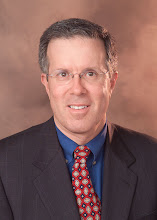Do you have the mistaken assumption that H-1B visas are strictly the province of computer professionals? In reality, almost half of H-1B visas are utilized by health care and education professionals.
This year's minimal H-1B usage is a boon to physicians finishing their medical residencies and fellowships. Why? Because, unlike last year when the H-1B cap was reached in the first week of the program, this year only 42,000 H-1B petitions were submitted toward the 65,000 cap. What's more, employers submitted a mere 1,000 petitions in the second week and another 1,000 during the third week. At this rate, the 65,000 cap won't be reached until sometime in September.
So, how does this help foreign-born physicians?
A little historical perspective is helpful. Prior to 1991, the only temporary visa category available to physicians who wanted to pursue medical residencies and fellowships in the U.S. was the J-1 exchange visitor visa. That year, Congress passed the Miscellaneous and Technical Immigration and Naturalization Amendments which, for the first time, permitted physicians who had successfully completed all three parts of the United States Medical Licensing Examination (USMLE) to obtain H-1B visas to pursue their residencies and fellowships.
In general, most physicians prefer to do their training on H-1B rather than J-1 visas since the latter category comes at a steep price. J residents and fellows are compelled to return to their home countries for a minimum of two years before they can return to the U.S. on H-1B visas or as permanent residents. Alternately, they can obtain a "waiver" of this requirement, usually by being sponsored by a government agency and practicing for three years in a medically-underserved area.
H-1B residents and fellows have no such requirement. However, most residents and fellows complete their training for H-1B "cap-exempt" employers, usually universities or hospitals which are affiliated with universities. This subjects them to another requirement.
Although these physicians are not subject to the home residency requirement, they are restricted in the type of employers that they can work for after they complete their training. This is because their training usually ends on June 30th. Since "cap-subject" H-1Bs were not available beyond the first week of April for the past couple of years, these physicians have been restricted working at "cap-exempt" jobs. That is, they must practice medicine at a university, at an institution which is related or affiliated with a university, at a nonprofit research institute or at a government research institute. Such jobs are hard to come by.
However, this year is different. Since it is all but certain that the H-1B cap will not be reached by June 30, H-1B medical residents and fellows will be able to transition from "cap-exempt" training programs to "cap-subject" jobs which begin on October 1st.
A word to the wise. Physicians who accept jobs in affluent areas can qualify for H-1B status, but it is doubtful that they will qualify for permanent residency through employer sponsorship. Therefore, savvy physicians will look for jobs in areas where the number of physicians are few and where American physicians are reluctant to practice, mainly in inner city and remote rural areas. This way, they will be able to qualify for permanent residence either through PERM or National Interest Waivers.
For additional information about temporary visas and permanent residence for physicians, job opportunities and "how to" immigration videos, see our "Physicians" web page at
Monday, April 20, 2009
Physicians To Benefit From H-1B Slowdown
Labels:
h-1b,
immigration attorney,
immigration lawyer,
physicians
Subscribe to:
Post Comments (Atom)

I believe it will not even fill the 65k this year as most of the filers are OPT's left our last year. It is kind of takes the pressure of the employers and seekers too. Physicians and Educators will welcome the news. I think they should take away the cap and leave it to the market to decide the need
ReplyDelete